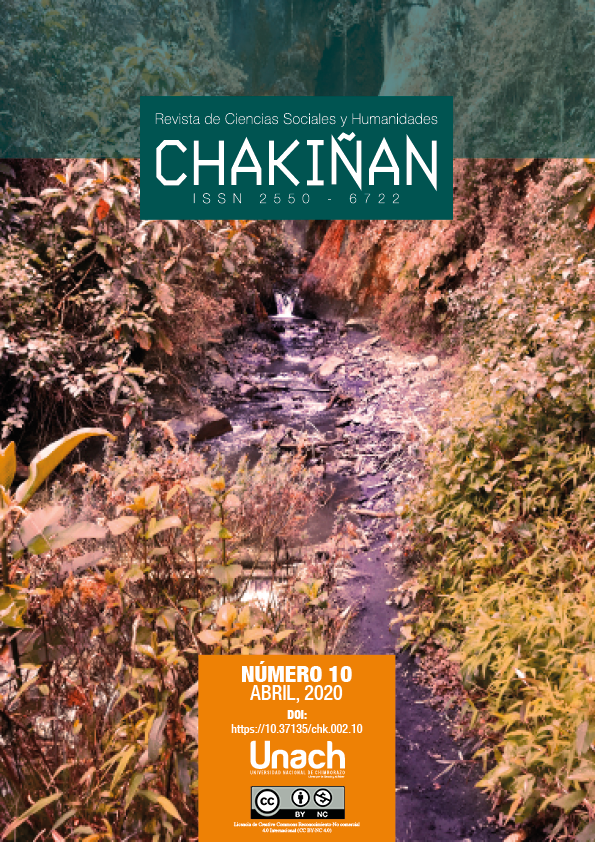THE RELATION BETWEEN ENGLISH FOR SPECIFIC PURPOSES(ESP) AND DENTAL SCIENCES
Main Article Content
Abstract
This research was carried out to determine the needs, weaknesses, and strengths of professionals in the field of dentistry concerning the management of the four language skills of English for Specific Purposes (ESP). This study was of a descriptive, field, and mixed approach, in which the survey was the technique, and as a data collection instrument, a questionnaire applied to 26 specialist professors of the Dentistry School of Universidad Nacional de Chimborazo, Ecuador. It was evidenced that the specialists have weaknesses about the four skills in the English language because only 7.7% said they had an excellent level of listening and speaking. In contrast, 15.4% said they had an excellent level of Writing and Reading. The need for the design and implementation of a working text to improve mastery of skills and updating of English language knowledge for dental purposes was proved through a one-way analysis to the right (sample t-test). The study compared if the domains of the professors exceeded 0.70 (p = 0.00; 1-p / 2 = 1; t = 4.34 (25)) in which case it was shown with domain management of less than 70%. The importance of this contribution was acceptable by the professors.
Downloads
Article Details
Conference Proceedings Volume
Section
Responsibility of the authors:
The authors are responsible for the ideas and data collected in the manuscripts. They are additionally accountable for the fidelity of the information, the correction of the citations, the right to publish any material included in the text, and the presentation of the manuscript in the format required by the Journal (WORD template). A manuscript forwarded to CHAKIÑAN must not have been published before, nor must it have been submitted to another means of publication.
Copyright:
Published articles do not necessarily compromise the viewpoint of the CHAKIÑAN JOURNAL. The Journal is aligned to the policy of the licence de Creative Commons Reconocimiento-No comercial 4.0 Internacional (CC BY-NC 4.0). Each author retains the right to the paper published in the Chakiñan journal.
Privacy statement
The personal data and email addresses entered in this magazine will be used exclusively for the purposes stated by the publication and will not be available for any other purpose or person.
How to Cite
Share
References
Allouche, W. S. & Benmoussat, S. (2012). Designing and Implementing an ESP Course for Medical Students: A Step Towards Building up a Knowledge Society. Chetouane, Argelia: Abou-Berk Belkaid University.
Alqurashi, F. (2016). English for Medical Purposes for Saudi Medical and Health Professionals. Advances in Language and Literary Studies, 7(6), 234–52.
Beltrán, Ó. (2006). Factor de impacto. Revista Colombiana de Gastroenetrología, 21(1), 57–61.
Bueno, C. & Henández, M. (2002). Inglés con fines específicos: entonces y ahora. Instituto Superior de Ciencias Médicas, 3.
Buitrago, J. & Herrera E. (2010). Metodología “Respuesta Física Total” como herramienta para el aprendizaje del Inglés en grado primero del Liceo Arquideocesano de Nuestra Señora (tesis de grado). Universidad de Manizales, Manizales, Colombia.
CONAIE. (19 de julio de 2014). Kichwa. Recuperado de https://conaie.org/2014/07/19/kichwa/
EF Education First. (2018). EF EPI Índice del Dominio del Inglés de EF 2018. Retrieved from https://www.ef.com/__/~/media/centralefcom/epi/downloads/full-reports/v8/ef-epi-2018-spanish-latam.pdf
Gerivani, L. (2016). An Analysis of the English Language Needs of Medical Students and General Practitioners : A Case Study of Guilan University of Medical Sciences. International Journal of English Language and Literature Studies, 5(2), 104–110. https://doi.org/10.18488/journal.23/2016.5.2/23.2.104.110
Herrera, J. & Vallejo, A. (2013). Evaluación del aprendizaje de Inglés y su transversalidad en el programa de Psicología. México: Universidad Veracruzana.
Javid, C. Z. (2011). EMP Needs of Medical Undergraduates in a Saudi Context. Kashmir Journal of Language Research, 14(1), 89–110.
Kayaoğlu, M. N. & Dağ Akbaş, R. (2016). An Investigation into Medical Students’ English Language Needs. Participatory Educational Research, spi, 16(1), 63–71. https://doi.org/10.17275/per.16.spi.1.8
Leal , A. & Hernández , Y. (2016). Evolución de la odontología. Oral, 17(55), 1418-1426.
Montes De Oca, I. & Morete, C. (2017). Diseño de la estrategia de Inglés con propósitos específicos en un contexto extracurricular para el aprendizaje del Inglés técnico médico en estudiantes de medicina de la Universidad Regional Autónoma de los Andes (tesis de maestría). Pontificia Universidad Católica del Ecuador, Ambato, Ecuador. Recuperado de http://repositorio.pucesa.edu.ec/bitstream/123456789/2138/1/76567.pdf
Niazi, M. M. (2014). The Need for English Language Courses in Pakistani Medical Colleges. New Horizons, 8(1), 39–52.
Ortiz, M., Rodríguez, A. & Piñero, A. (2014). Nuevas tendencias metodológicas en la enseñanza de lenguas extranjeras. España: Universidad de Cádiz.
Paltridge, B. & Starfield, S. (2013). The Handbook of English for Specific Purposes. Boston: Wiley-Blackwell.
Pavel, E. (2014). Teaching English for medical purposes. Bulettin of the Transilvania University of Brasov, Series VII: Social Sciences and Law, (2), 39–46.
Rodis, O. M. M., Barroga, E., Barron, J. P., Hobbs, J., Jayawardena, J. A., Kageyama, I. & Yoshimoto, K. (2014). A proposed core curriculum for dental English education in Japan. BMC Medical Education, 14(1), 1–9. https://doi.org/10.1186/s12909-014-0239-4
Rozgienė, I. & Trečiokaitė, A. (2019). Survey of the English Language Needs of the Senior Students of Physical and Biomedical Sciences. Verbum, 2, 122–130. https://doi.org/10.15388/verb.2011.2.4962
Salager-Meyer, F. (2014). Origin and development of English for Medical Purposes. Part II: Research on spoken medical English. Medical Writing, 23(2), 129–131. https://doi.org/10.1179/2047480614z.000000000204
Sequeira, A. H. (2016). Introduction to concepts of teaching and learning. Applied and Social Sciences Magazine, 6(1), 1–6.
Sierra-Galan, L. (2016). El idioma « inglés » en la medicina. Archivos de Cardiología de México, 86(1), 97–98. https://doi.org/http://dx.doi.org/10.1016/j.acmx.2015.09.001
Valdés, M., González, S., Diaz, I., Verdayes, A. & Diaz, L. (2010). La enseñanza del inglés en las ciencias médicas : su repercusión social. Rev. Ciencias Médicas, 14(3). Recuperado de http://scielo.sld.cu/pdf/rpr/v14n3/rpr06310.pdf
Weston, J. (2015). How Much English Does a Dentist Need ? National Council of Teachers of English, 11(2), 71–74. Retrieved from http://www.jstor.org/stable/355966





